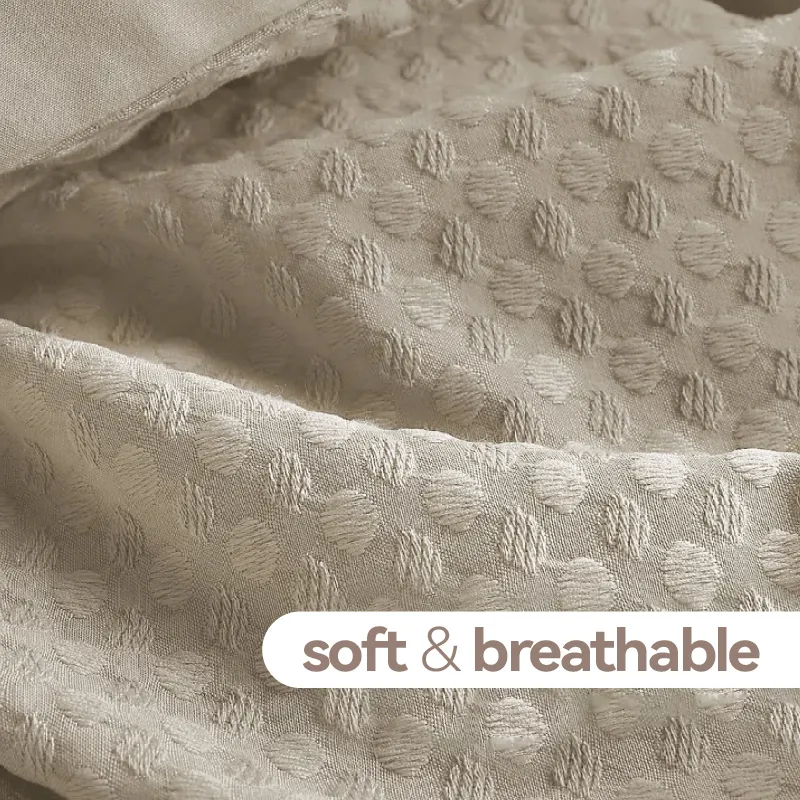Tips for Selecting the Perfect Duvet Insert for Your Needs
Choosing a Duvet Insert A Comprehensive Guide
When it comes to creating a cozy and inviting bedroom, selecting the right duvet insert is a crucial step. The duvet insert not only provides warmth but also enhances the overall aesthetic and comfort of your bedding. With various materials, weights, and styles available, choosing the perfect duvet insert can be a daunting task. Here’s a comprehensive guide to help you make an informed decision.
1. Understand Duvet Inserts What Are They?
A duvet insert is a type of blanket, usually filled with down, feathers, wool, or synthetic fibers, designed to provide warmth and comfort. Unlike comforters, which have fabric sewn into them, duvet inserts are typically more flexible and can be paired with various duvet covers for a stylish look.
2. Consider the Fill Material
The fill material plays a significant role in the duvet's comfort, warmth, and overall performance. Here are the most common types
- Down Made from the soft undercoating of ducks or geese, down-filled duvets are known for their luxurious feel and excellent insulation. They are lightweight yet warm, making them a popular choice. However, those with allergies may want to avoid down or opt for hypoallergenic options.
- Feather Feather duvets use larger feathers from ducks or geese. They tend to be less expensive than down but can be heavier and less warm. Feather duvets can offer a nice combination of comfort and price.
- Wool Wool duvets naturally regulate temperature and wick moisture away, making them ideal for people who tend to sleep hot. They are also durable and hypoallergenic.
- Synthetic Fibers These are usually made from polyester and offer a budget-friendly alternative. They are hypoallergenic and easy to care for, but they might not offer the same warmth and breathability as natural fills.
choosing a duvet insert

Duvets come in various weights, and the choice often depends on your personal preference and the climate you live in. Lightweight duvets are perfect for warmer climates or summer months, while medium to heavyweight options provide extra warmth during colder seasons. You may also consider a hybrid approach, using a lighter duvet in summer and adding a heavier one in winter.
4. Consider the Thread Count and Fabric
The outer fabric of the duvet insert affects its overall feel and durability. Higher thread counts (generally 300 or above) result in softer and more durable fabrics. Cotton is the most popular choice because it breathes well and is easy to maintain. Satin or silk can offer a luxurious touch but may require more special care.
5. Maintenance and Care
Before making a purchase, consider how much maintenance you are willing to undertake. Some duvet inserts are machine washable, while others require dry cleaning. Make sure to read the care instructions and choose an insert that fits your lifestyle.
6. Budget Considerations
Duvet inserts can vary significantly in price. While it’s tempting to opt for the cheapest option, investing in a high-quality duvet can pay off in terms of comfort, durability, and sleep quality. Balance your budget with the features that are most important to you.
Conclusion
Choosing a duvet insert is a personal decision that greatly impacts your sleep quality and bedroom decor. By considering the fill material, weight, fabric, care instructions, and your budget, you can find the perfect duvet insert that meets your needs and enhances your nighttime comfort. A well-chosen duvet can transform your bedroom into a haven of relaxation, ensuring you enjoy restful nights and waking up refreshed. Happy shopping!
-
natural-bamboo-sheets-for-sensitive-skin-reliefNewsAug.22, 2025
-
organic-cotton-bed-sheet-fabric-certification-explainedNewsAug.22, 2025
-
Creating a Spa Day with Plush Waffle Bath RobesNewsAug.14, 2025
-
How to Cut Linen Maintenance Costs by 30% with Proper Polycotton IroningNewsAug.11, 2025
-
Elevating Comfort and Quality with the Right Bed LinenNewsJul.07, 2025
-
Bedding Essentials: From Percale Sheets to White Quilts, Finding Your Perfect Sleep HavenNewsJul.07, 2025
-
Choosing the Right Bedding for a Comfortable and Stylish BedroomNewsJul.07, 2025






